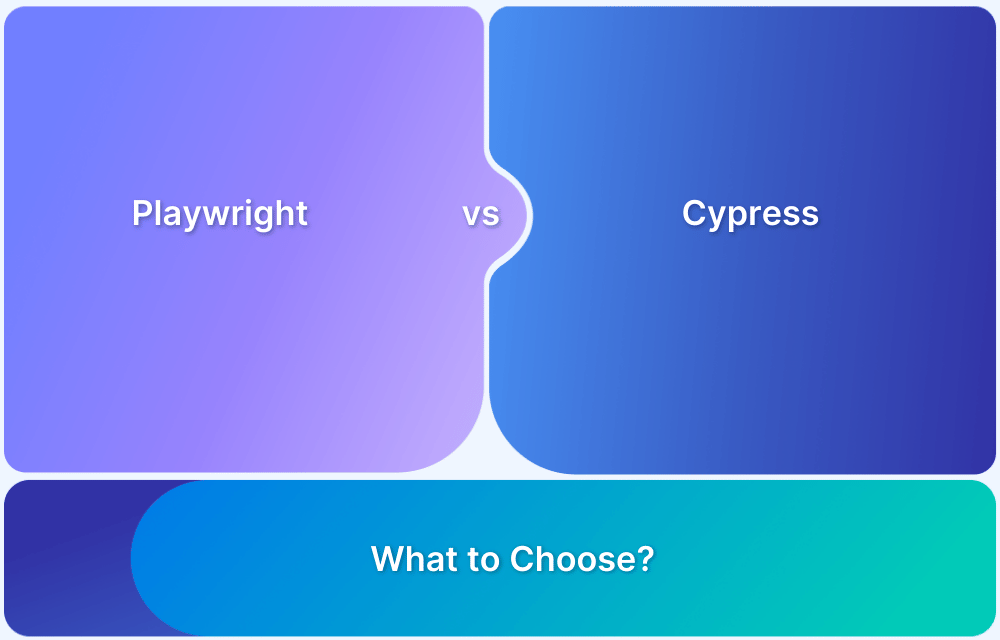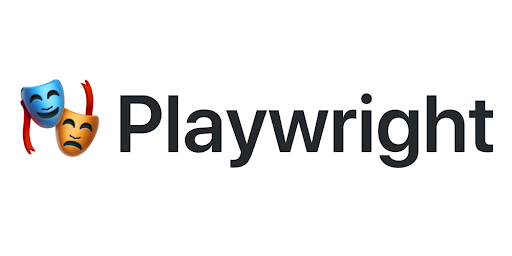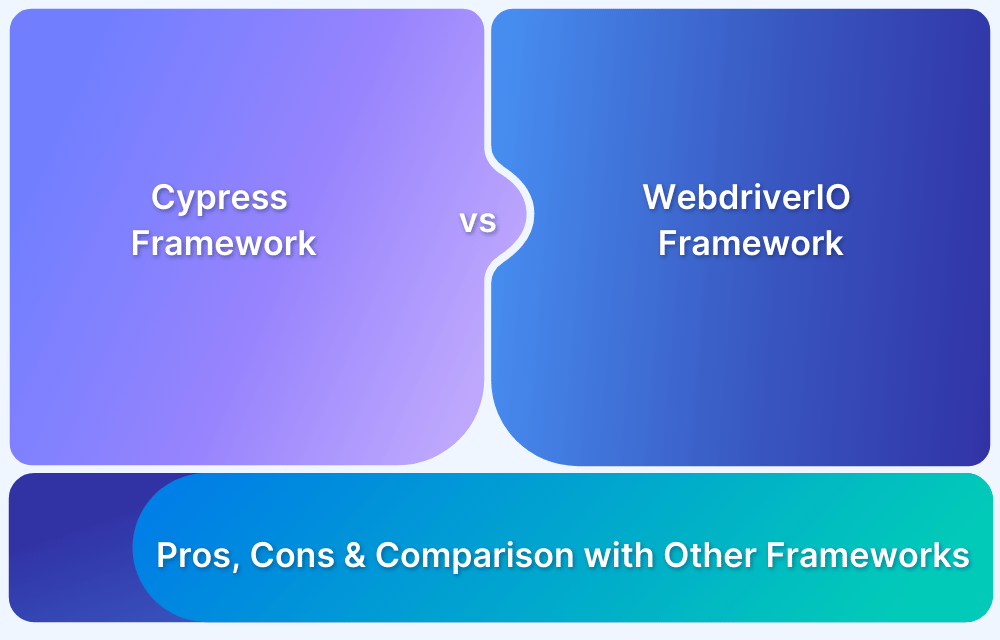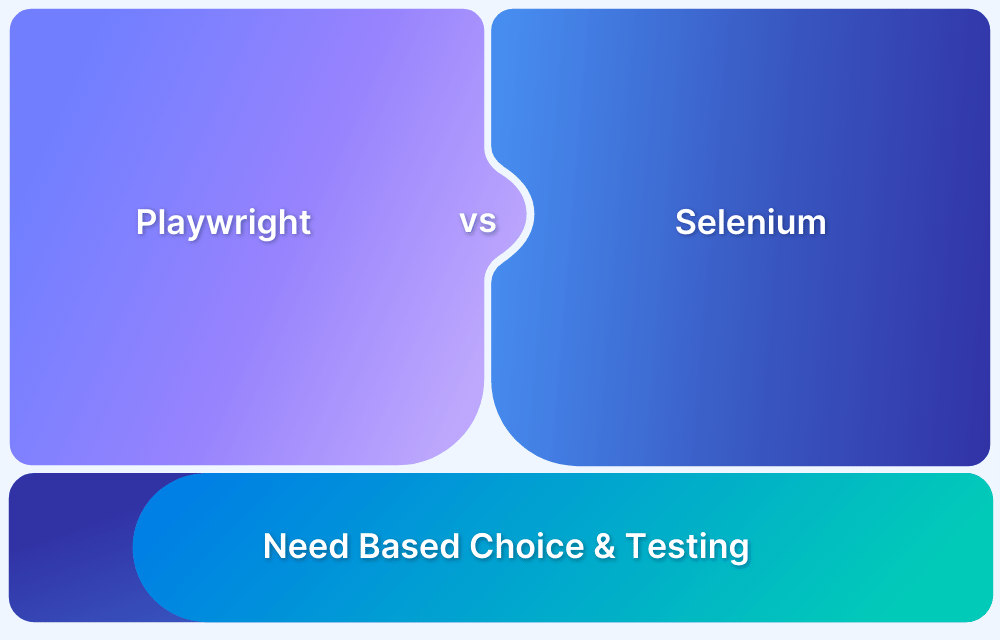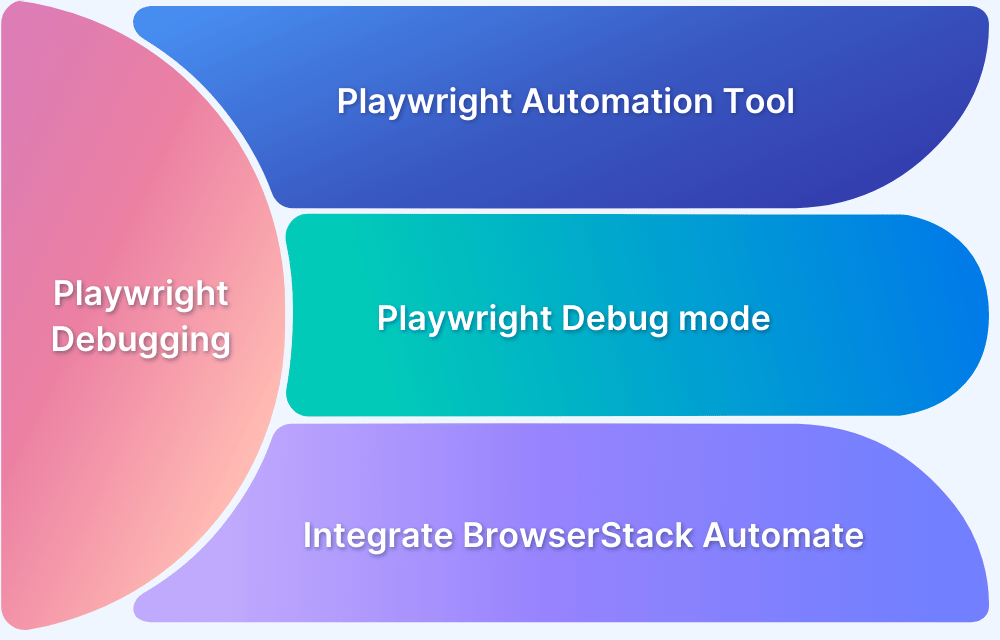It is essential to test web apps and ensure they function according to the user requirements for a high-end user experience. Tools like Playwright and Cypress enable automated testing, with Cypress supporting JavaScript and Playwright offering multi-language support.
Overview
What is the Playwright Framework?
Playwright is a modern end-to-end testing framework for web applications, supporting multiple browsers, parallel execution, and powerful automation capabilities across Chromium, Firefox, and WebKit.
What is the Cypress Framework?
Cypress is a JavaScript-based testing framework designed for fast, reliable, and easy end-to-end testing of web applications, offering real-time debugging and automatic waits.
Playwright vs Cypress: Core Differences
- Browser Support: Playwright supports Chromium, Firefox, and WebKit, while Cypress is primarily focused on Chromium-based browsers.
- Automation Approach: Playwright runs in headless or headed mode, supporting cross-browser testing, whereas Cypress operates directly within the browser for a faster debugging experience.
- Programming Language: Playwright supports JavaScript, TypeScript, Python, C#, and Java, while Cypress is JavaScript/TypeScript only.
- Parallel Execution: Playwright natively supports parallel test execution, while Cypress requires workarounds or a paid plan.
- Network Control: Playwright offers advanced network interception and mocking capabilities, while Cypress has more limited options.
This article compares Playwright vs Cypress and calibrates against the framework that best fits your automation needs.
What is the Playwright Framework?
Playwright framework is an open-source, Nodejs-based automation framework for end-to-end testing. It was developed and maintained by Microsoft. Its main goal is to run across the major browser engines – Chromium, Webkit, and Firefox.
It was forked from an earlier project called Puppeteer, but it is relatively different from it. The main difference is that Playwright was explicitly made for end-to-end testing and was built for developers and testers. The team identified a gap in the ability to run automated end-to-end tests across multiple browsers.
Playwright Supported Capabilities
Playwright framework offers the following features:
- Supports Cross-browser, Cross-Platform, Cross-Language and Native Mobile Web Emulation of Google Chrome and Safari
- Support Auto-Wait for Web Elements and Network Interception for reducing Flaky tests
- Assertions are automatically retried for Dynamic Web Elements which reduces flaky behavior in tests
- Supports Execution trace and Runner for managing the test execution and analyzing the test flow
- Support capturing Screenshots, Videos and Test Retries
- Support Multiple Tabs and Multiple Origins
- Support IFrames and Shadow DOM
- Playwright comes with Web Inspector to retrieve Locators easily
- Supports running tests in Isolation
- Supports Generating Tests by recording the user action within browser
- Supports Parallel Tests Execution
- Supports API testing
Playwright framework uses Browser Context, isolated environments built on a single browser instance. Using Browser Context, one can create concurrent tests entirely separate from each other and execute them parallel to the browser context.
- It can also be used with primary CI/CD servers like TravisCI, CircleCI, Jenkins, Appveyor, GitHub Actions, etc.
- You can also use a docker image to get started with the cloud deployment of Playwright when not using any CI/CD providers.
- It makes things easy right from the start by introducing intelligence defaults.
- It’s easy to install and has many capabilities for more advanced scenarios.
Creating and running a Playwright script ensures that the UI is readied to execute the actions after running through a bunch of checklists. And all of this is done automatically without you having to code the tests manually.
A lot more features will be more transparent when we make the comparison of Playwright vs Cypress.
Read More: Cross Browser Testing using Playwright
What is the Cypress Framework?
Cypress Framework is an open-source automation tool for web app testing. Cypress supports JavaScript and is used for end-to-end testing. By default comes with Mocha test framework.
Cypress uses a different approach than the existing testing tools. When you run a script inside the browser, the script is executed in the same loop as your application. If you have some cases to be run outside the browser, Cypress leverages the Node.js server to handle it.
It provides more consistent results as it can understand everything that happens inside and outside the browser. This also gives native access to each object without dealing with over-the-wire protocols or object serialization.
Cypress Supported Capabilities
Cypress offers the following features:
- Real-time debugging of apps by taking snapshots as your tests run
- Cypress network control allows you to control, stub, and test edge cases easily without using a server
- API testing capabilities
- Component testing capabilities
- Tests are written in JavaScript/Typescript
- Since Cypress runs directly in the browser without Selenium or WebDriver, it delivers faster, more consistent, and less flaky tests than WebDriver-based frameworks.
- Supports BDD/TDD style testing
- It offers excellent Debugging capabilities with dev tools. It gives readable errors and stack traces and makes debugging super fast.
- Automatic waiting: Cypress automatically waits for commands and assertions before moving on.
- It is fast because tests run inside the browser like an app
- Supports Custom command to create reusable and chainable commands.
The Cypress test runner has no restrictions. Using Cypress, you can test cases, change the reporter, and even write a plugin that can yield a pass/fail – all of which are open-source, MIT-licensed, and accessible.
Playwright vs Cypress: Core Differences
Here are the key differences between Playwright and Cypress:
| Criteria | Playwright | Cypress |
|---|---|---|
| Language | Supports multiple languages such as JavaScript, Java, Python, and .NET C# | Supports JavaScript |
| Test Runner Frameworks Supported | Mocha, Jest, Jasmine | Mocha |
| Operating Systems Supported | Windows, Linux, and macOS | Windows, Linux, and macOS 10.9 and above |
| Open Source | Open Source and Free | Open Source and Free |
| Architecture | Headless Browser with event-driven architecture | Executes test cases directly inside the browser |
| Browsers Supported | Chromium, Firefox, and WebKit | Chrome, Firefox, and Edge |
| Support | Since Playwright is fairly new, the support from the community is limited as compared to Selenium | Strong community support from professionals across the world |
| Real Devices Support | Does not support real devices for Mobile Browser Tests but supports emulators | Supports real device cloud and remote servers |
Which to choose – Playwright or Cypress?
Functionality remains the core focal point when choosing the proper testing framework from Playwright or Cypress. After gaining insights from the Cypress vs. Playwright comparison, it is evident that Cypress offers extensive support with its well-drafted documentation and proactive community. This helps to overcome all the bottlenecks and issues through the help available.
Benefits of Playwright
- Supports multiple languages such as JavaScript, Java, Python, and .NET C#
- Easy setup and configuration
- Playwright framework, by default, comes with many valuable reporters like List, Dot, Line, JSON, JUnit, and HTML Reporters.
- Supports the execution of parallel testing through Browser Context
- Debugging options include Playwright Inspector, VSCode Debugger, Browser Developer Tools, and Trace Viewers Console Logs.
Read More: The ultimate Playwright Python tutorial
Limitations of Playwright
- Playwright doesn’t support Native Mobile Apps
- No Support for IE11
- Since Playwright is fairly new, the support from the community is limited.
- Since Playwright is new to the market user base is still growing.
Key Takeaway – If you are experienced and want to test Webkit browsers or your tests tend to have more coverage across multiple domains and pages, then Playwright is the right choice.
Benefits of Cypress
- Has excellent documentation.
- It captures snapshots during test execution.
- Cypress waits automatically for commands and assertions.
- Developers or QAs can use Spies, Stubs, and Clocks to verify and control the behavior of server responses, functions, or timers.
- Earlier Cypress supported only Chrome testing. Now,Cypress supports Firefox and Edge browsers.
- As the programmer writes commands, Cypress executes them in real time, providing visual feedback as they run.
Limitations of Cypress
- One cannot use Cypress to drive two browsers at the same time
- Cypress only supports JavaScript for creating test cases
- Limited support for iFrames
Key Takeaway – Cypress is the way to go if you are a beginner looking for ease of installation and usage.
Why Run Cypress or Playwright Tests on Real Devices
Here’s why you should run your Cypress or Playwright tests on Real Devices & Browsers using BrowserStack Automate:
- Diverse Environment Testing: It enables the execution of Cypress or Playwright tests across a broad selection of browsers and operating systems, eliminating the necessity for maintaining local testing infrastructure. This ensures consistent application performance across various platforms.
- Concurrent Test Execution: By allowing simultaneous execution of multiple Cypress or Playwright test suites, BrowserStack Automate significantly cuts down on total testing time, facilitating quicker iterative feedback and accelerated deployment cycles.
- CI/CD Integration: The platform seamlessly integrates with major continuous integration and delivery systems, including Jenkins, Travis CI, CircleCI, and GitHub Actions, automating the testing process within the development pipeline.
- Diagnostic Tools for Better Debugging: BrowserStack provides comprehensive diagnostic capabilities, including detailed logs, screenshots, and video recordings of test sessions, aiding in the swift identification and resolution of issues.
- Testing on Real Devices: Beyond simulated environments, BrowserStack also supports testing on real devices and browsers on the cloud, offering more precise and real-world test outcomes.
- Customizable Test Execution: Users can tailor test executions to meet specific needs through BrowserStack’s user interface or APIs, enabling adaptable and controlled test runs.
Conclusion
It is important to note that choosing a testing tool for your web app is ultimately a choice based on usage and functionality, and if the right testing tool is used, it can make the entire testing process streamlined.
- Emulators/simulators cannot offer real user conditions for testing software.
- Consider testing on a Real Device Cloud that offers the latest devices, browsers, and OS versions.
- BrowserStack’s real device cloud provides integrations with popular CI/CD tools such as Jira, Jenkins, TeamCity, Travis CI, and more.
- Additionally, in-built debugging tools let testers identify and resolve bugs immediately.
- BrowserStack facilitates both Cypress testing and Playwright testing with hassle-free parallelization.
